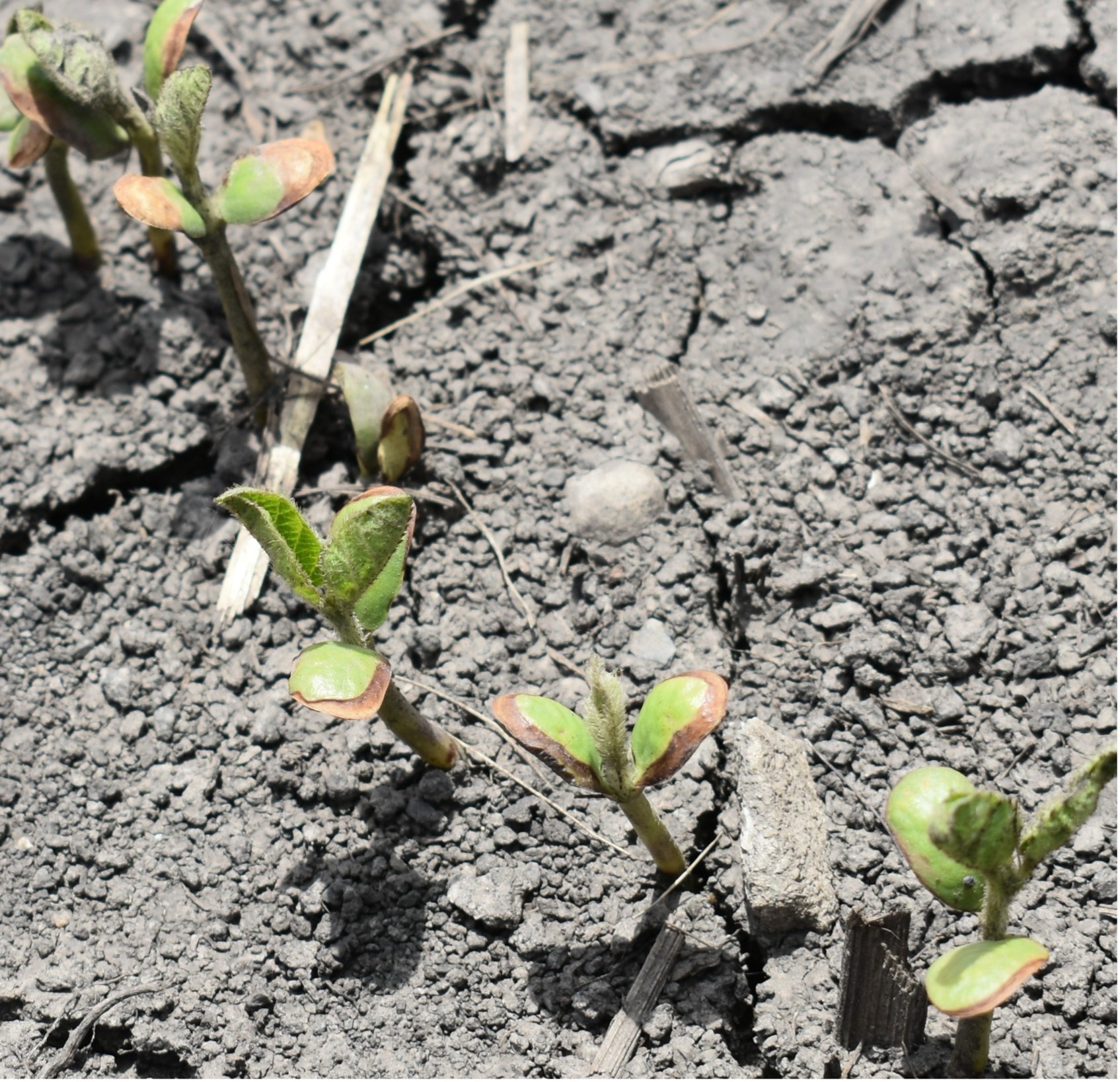Project Leaders: Aaron Hager and Logan Miller, University of Illinois
Purpose: Early-planted soybeans often face cooler, wetter conditions during emergence. In this environment, stand loss and crop injury are possible with certain preemergence (PRE) herbicides. Growers should know which commercial PRE herbicides or specific active ingredients of PRE herbicides are more likely to cause injury to soybean and reduce yield.
Approach: Field research, funded by the Illinois Soybean Association checkoff, began in 2024 and continues for a second year in 2025. In year one of the study, researchers tested 13 commercially available herbicide premixes applied at 1x labeled rates at planting. Early planting in 2024 occurred on April 15, and the conventional planting date was May 19. Additionally, sudden death syndrome (SDS)-treated (ILevo) and non-SDS-treated soybeans were included across all PRE treatments and both planting dates. Soybean injury, stand counts, and soybean height were all recorded at regular intervals following soybean emergence, along with soybean yield.

Sudden Death Syndrome (SDS) treated soybeans three days after emergence (DAE). Photo Credit: Logan Miller
Results:
- Soybean injury between planting dates was similar, but SDS-treated soybeans showed greater injury and stand loss regardless of PRE herbicide.
- Results from year one of this project show that early-season soybean injury and stand loss can occur from PPO-based PRE herbicides regardless of planting date (sulfentrazone, flumioxazin, or saflufenacil). However, Preview (sulfentrazone + metribuzin) and Prefix (fomesafen + S-metolachlor) were exceptions and did not increase soybean injury.
- Products without a PPO herbicide showed excellent crop safety compared to all other products.
- Weather during and shortly after soybean emergence remains the most important factor influencing the extent of soybean injury and stand reduction.
- In early-planted soybeans, fields that are poorly drained or prone to ponding are particularly at risk for conditions that lead to crop injury. Choosing the right herbicides in these fields can have a significant impact—avoid using PRE herbicides that may cause injury.
- Despite injury caused by certain PRE herbicides, all treatments recovered from injury by 28 days after emergence, and stand counts were overall greater than 100,000 plants/acre.
- Individual PRE herbicides did not negatively affect soybean yield. Stand loss from the addition of ILevo seed treatment is likely what resulted in a 5‒6 bushel/acre soybean yield reduction for both planting dates.
Key Takeaway: Certain PRE herbicides do cause early-season soybean injury, but may not impact yield.

Table 1. Soybean Response to PRE Herbicide
The impact of PRE herbicides on soybeans at three days after emergence (DAE) is measured by average soybean injury on a scale from 0 (no injury) to 100 (plant death) and soybean stand (thousands plants/acre) at 3 DAE. Soybean injury at 3 DAE significantly differed among the herbicide treatments, but no differences were found in the final yields.

Table 2. Soybean Yield
Sudden death syndrome (SDS)-treated (ILevo) soybeans yielded 5-6 bushel/acre less than non-SDS treated soybeans at both planting dates.


 and then
and then
Was SDS infection present in the trial areas? The potential yield decrease or increase from the addition of ILevo could vary depending upon the presence and severity of SDS. Uncertainty definitely makes management decisions more complicated.
Good question, Robert. We don’t have the answer, but encourage you to reach out to Logan Miller who worked on the project. His email is loganrm2@illinois.edu.